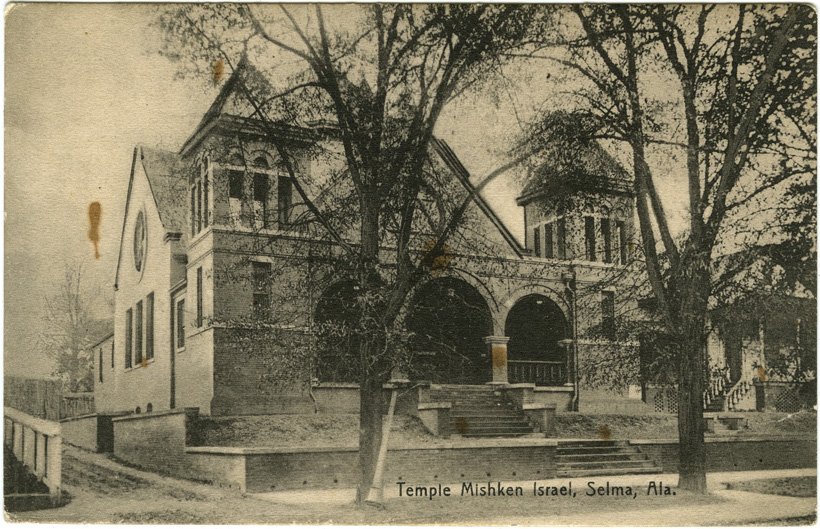5.6 Selma, Alabama
Congregation Mishkan Israel, 503 Broad Street
Architect unknown, 1900
Rowell Book and Novelty Company, Selma, Alabama, publisher; no date
As shown in this black and white postcard image, the home of Reform Congregation Mishkan Israel (Dwelling of Israel, also known as Temple Mishkan Israel) is a stately building with wide welcoming arcades set between corner towers and reached by two flights of steps from the sidewalk.
The Selma synagogue’s architecture embodies many of the popular design elements of the time—features that also demonstrate the integral place of Jews in local society, or at least their aspirations. The synagogue mixes Romanesque and Renaissance components, drawing from the two most common contemporary styles of public architecture. The building is elevated, and its steps lead to three big entrance arches flanked by square corner towers. Curiously, however, the main entrance is not on axis—there are only windows where one expects to find doors. One must turn from the porch to enter through doors in the towers.
Above the projecting arcaded entrance porch is a large gable or pediment, its central round window inscribed with a prominent Star of David. That star says it all: this is a public building, but it is not to be confused with a church or courthouse.
A substantial octagonal drum surmounts the main body of the synagogue—a design then popular for churches as well. It allows light to fill the expansive sanctuary. Curved benches serve to bring the congregation together, facing the raised bimah at the far end of the room. Each side wall is punctuated by a group of three rectangular stained glass windows and a large round window above inscribed with the Star of David, as in the facade.
Formally established in 1870, Mishkan Israel held services at private residences until 1876 when the congregation rented an Episcopal church for worship and events. In 1892, members acquired a parsonage and schoolhouse on Broad Street for Sunday school. At that point they decided to build a new and permanent temple on the site. They broke ground in June 1899, completed the synagogue in December, and dedicated it in February 1900.
The building is part of Selma’s Old Town Historic District, listed on the National Register of Historic Places.
